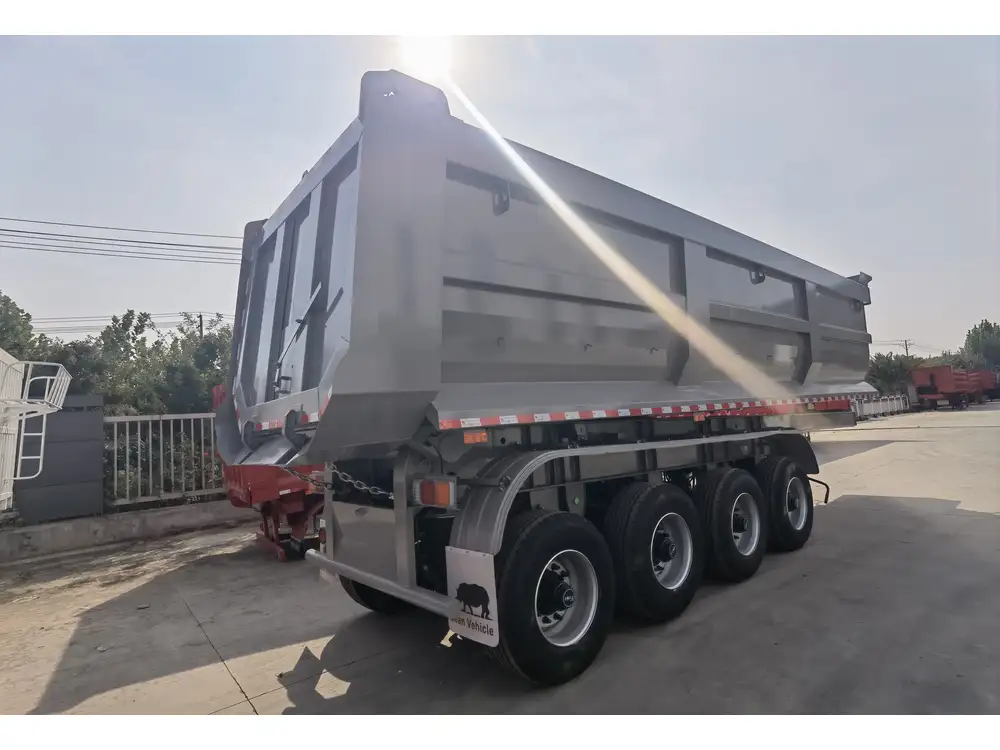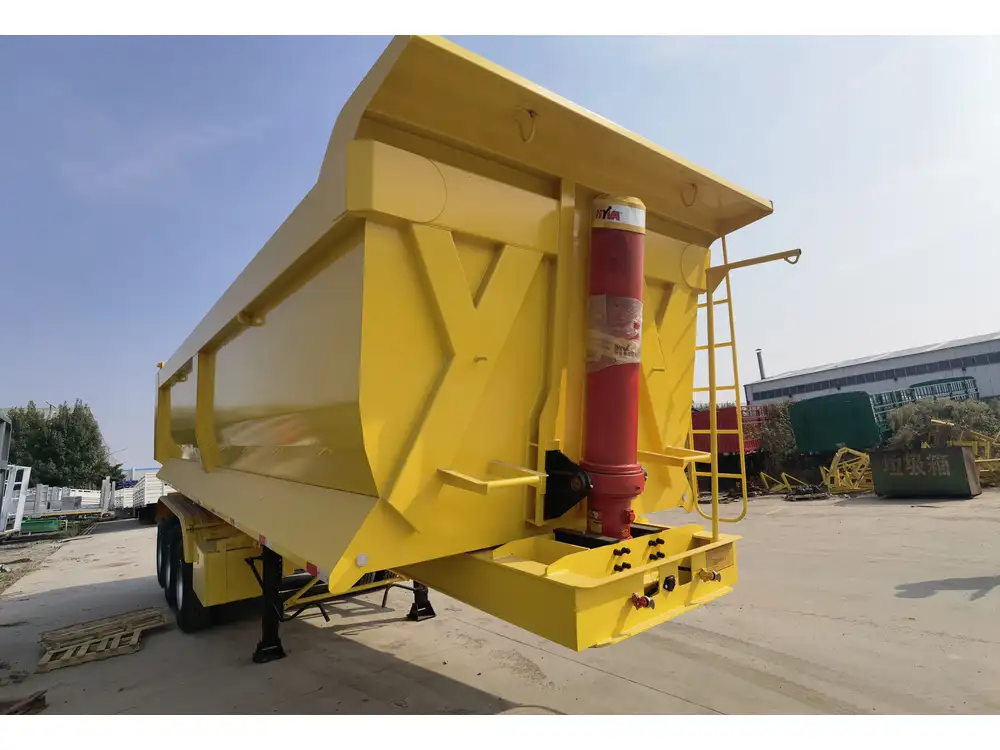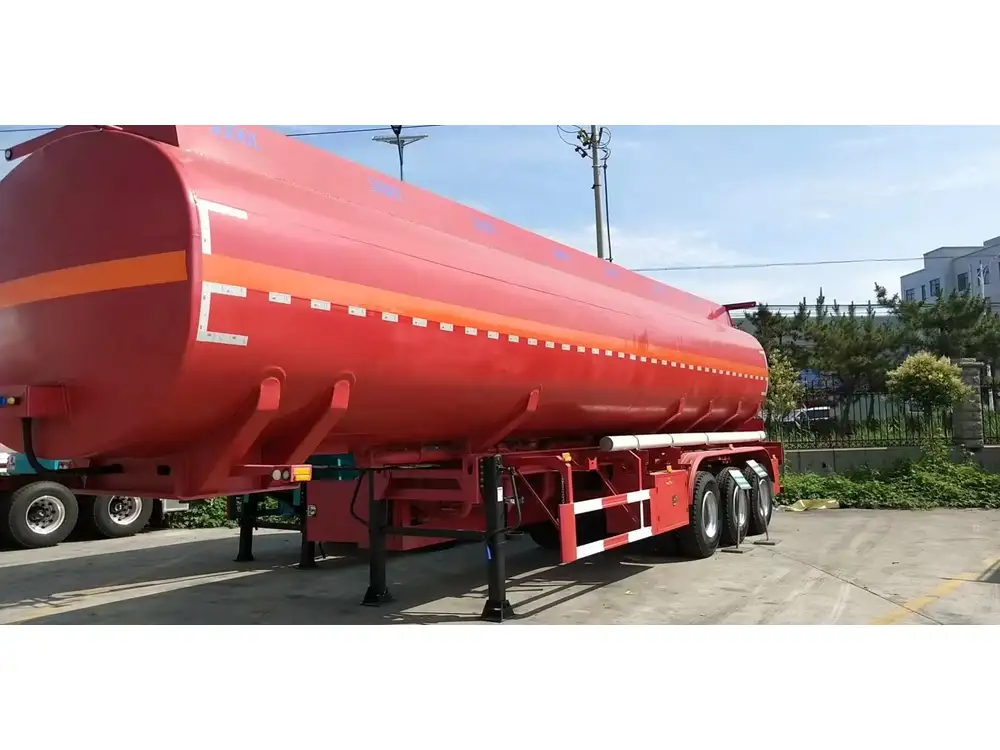In the world of transportation, terms often develop specific meanings that can sometimes lead to confusion, especially when discussing heavy-duty vehicles like semi-trucks and tractor trailers. While many people may use these terms interchangeably, there are distinct differences that set them apart. This comprehensive guide aims to clarify the definitions, functionalities, and applications of semi-trucks and tractor trailers, ensuring that readers understand not only the terminology but also the practical implications.
Understanding the Basics: Defining Semi-Trucks and Tractor Trailers
At its core, a semi-truck refers to a vehicle that consists of a tractor unit, which provides the power, coupled with a semi-trailer that is towed behind it. This configuration allows for a versatile transport solution for various cargo types. A tractor trailer, on the other hand, generally refers to the combination of the tractor unit and the trailer; therefore, it is considered more of a colloquial term. To illustrate this distinction further, we provide a simplified table:
| Term | Definition |
|---|---|
| Semi-Truck | A motor vehicle (tractor) that pulls a semi-trailer (not a full trailer). |
| Tractor Trailer | The combined unit of a tractor and semi-trailer, often referred to broadly. |
This table establishes the foundational understanding necessary for deeper exploration.
Components That Make Up the Vehicles
To appreciate the nuances fully, it is vital to delve into the individual components of each vehicle type. Both semi-trucks and tractor trailers consist of unique parts that contribute to their operational capabilities.

The Tractor Unit
- Engine: The powerhouse of the vehicle, usually a diesel engine known for durability and fuel efficiency.
- Cab: The area where the driver operates the vehicle, which includes control systems, seating, and often sleeping facilities for long-haul journeys.
- Chassis: The framework that supports the tractor unit, equipped with axles and suspension systems.
The Semi-Trailer
- Belly: The storage compartment designed to hold cargo. Semi-trailers come in various configurations (e.g., flatbed, refrigerated).
- Axles and Wheels: Provide support and facilitate movement. Typically, semi-trailers can have multiple axles depending on the load requirements.
- Coupling Mechanism: The fifth wheel connection that secures the semi-trailer to the tractor unit, allowing for articulation.
Visual Representation
Understanding these components can be significantly enhanced through visual aids. Consider this diagram showcasing a semi-truck’s anatomy:
Tractor Unit
_______________
| CAB |
| (Driver) |
|_______________|
/ \
| CHASSIS |
|___________________|
| |
| |
[WHEELS]
__________________________
| SEMI-TRAILER |
|__________________________|
Operational Mechanics: How They Work Together
The operational efficiency of a semi-truck and tractor trailer lies in their coupled design. The tractor unit is responsible for pulling the load, while the semi-trailer supports the weight and provides cargo capacity. This division of labor enables vehicles to transport heavy loads over long distances without sacrificing maneuverability. Here, we outline several key functionalities:
Load Capacity
The semi-trailer allows for varying load capacities, making it easier for businesses to adapt to their specific freight needs. While the total weight may be capped legally at specific thresholds (commonly around 80,000 pounds in the U.S.), the distribution of weight can be more effectively managed through this design.
Fuel Efficiency
A semi-truck’s aerodynamic shape reduces wind resistance, enhancing fuel efficiency. Additionally, the separation of the tractor and trailer aids in optimizing weight distribution, further contributing to a more economical fuel consumption profile.

Versatility
A semi-trailer can be swapped out quickly, accommodating different types of cargo without necessitating a new truck, whereas a traditional full trailer is typically fixed to its towing vehicle.
Legality and Regulations: Governing Use in Transportation
Given their primary role in freight transport, semi-trucks and tractor trailers are subject to strict regulations that govern their operation. Here are several aspects to consider:
- License Requirements: Drivers must possess a Commercial Driver’s License (CDL) specifically geared towards the type of vehicle they intend to operate.
- Weight Limits: Legal weight limits are defined by federal regulations but can vary by state, so it is crucial to comply with local laws.
- Inspection Protocols: Regular inspections ensure that these vehicles remain roadworthy, including checks on tires, brakes, lights, and the coupling mechanisms.
Key Regulatory Bodies
| Regulatory Body | Description |
|---|---|
| Federal Motor Carrier Safety Administration (FMCSA) | Enforces regulations for commercial drivers and vehicles, ensuring safety and compliance. |
| Department of Transportation (DOT) | Monitors the overall transportation infrastructure, including highways and signage. |

Common Misconceptions: Clearing the Fog
Understanding the differences between a semi-truck and a tractor trailer can be muddied by several misconceptions. Here, we rectify a few of the most pervasive misunderstandings.
1. They Are the Same
While they work in tandem, a semi-truck specifically refers to the truck portion (the tractor), whereas a tractor trailer encompasses both the truck and the trailer. This distinction is crucial for industry professionals and those involved in freight logistics.
2. Weight Distribution Is Secondary
In reality, effective weight distribution is paramount in transportation. Improperly loaded trailers can lead to hazardous driving conditions, including jackknifing and tire blowouts.

3. All Trucks Are Created Equal
Not all semi-trucks are designed for the same purpose. For instance, flatbed trailers suit construction materials, while refrigerated trailers are essential for transporting perishables. This diversity influences operational and logistical considerations.
Applications in Different Sectors
Freight Transportation
The most recognizable application of semi-trucks and tractor trailers is freight transportation. Their ability to carry bulky, heavy loads makes them perfect for industries such as:
- Construction: Transporting building materials.
- Agriculture: Hauling produce and livestock.
- Automotive: Delivering vehicles from manufacturers to dealerships.

Logistics Solutions
With the rise of e-commerce, semi-trucks and tractor trailers now play a critical role in logistics chains. Fast delivery times and the ability to accommodate varied cargo types make them indispensable in this sector.
Long-Distance Travel
For long-haul truckers, the semi-truck is not merely a means of transportation but a home on wheels. With comfortable cabins and sleeping compartments, they can travel thousands of miles while also managing their wellbeing on the road.
The Impact of Technology on Semi-Trucks and Tractor Trailers
To remain competitive in the freight industry, semi-trucks and tractor trailers continually evolve through technology. Key innovations include:

1. Telematics
Telematics systems allow fleet managers to monitor vehicle performance in real-time, optimizing routes, managing fuel consumption, and enhancing driver safety.
2. Autonomous Vehicles
Although still in developmental phases, autonomous driving technology offers an exciting glimpse into the future of freight transportation, promising enhanced safety and efficiency through automation.
3. Fuel Alternatives
There is ongoing exploration of hybrid and fully electric truck models to reduce carbon footprints within the trucking industry, which could revolutionize the trucking landscape in the years to come.

Conclusion: Key Takeaways
In summary, understanding the differences between a semi-truck and a tractor trailer is essential for anyone involved in the transport and logistics sector. Their interaction, legality, applications, and technological developments shape the industry constantly.
- Essential Definitions: A semi-truck includes the tractor that pulls the load, while a tractor trailer consists of both the tractor and semi-trailer.
- Importance of Components: Each vehicle part plays a critical role in functionality, capacity, and safety.
- Navigating Regulations: Awareness of legal requirements is vital for compliance and safety.
- Addressing Misconceptions: Clarifying common misunderstandings ensures informed use of terminology.
Understanding these dynamics not only enhances knowledge but also improves efficiency and safety in transportation. Embracing the importance of technology and its evolution will sustain the growth and reliability of the freight transportation industry, ensuring that it meets the demands of a rapidly changing world.



